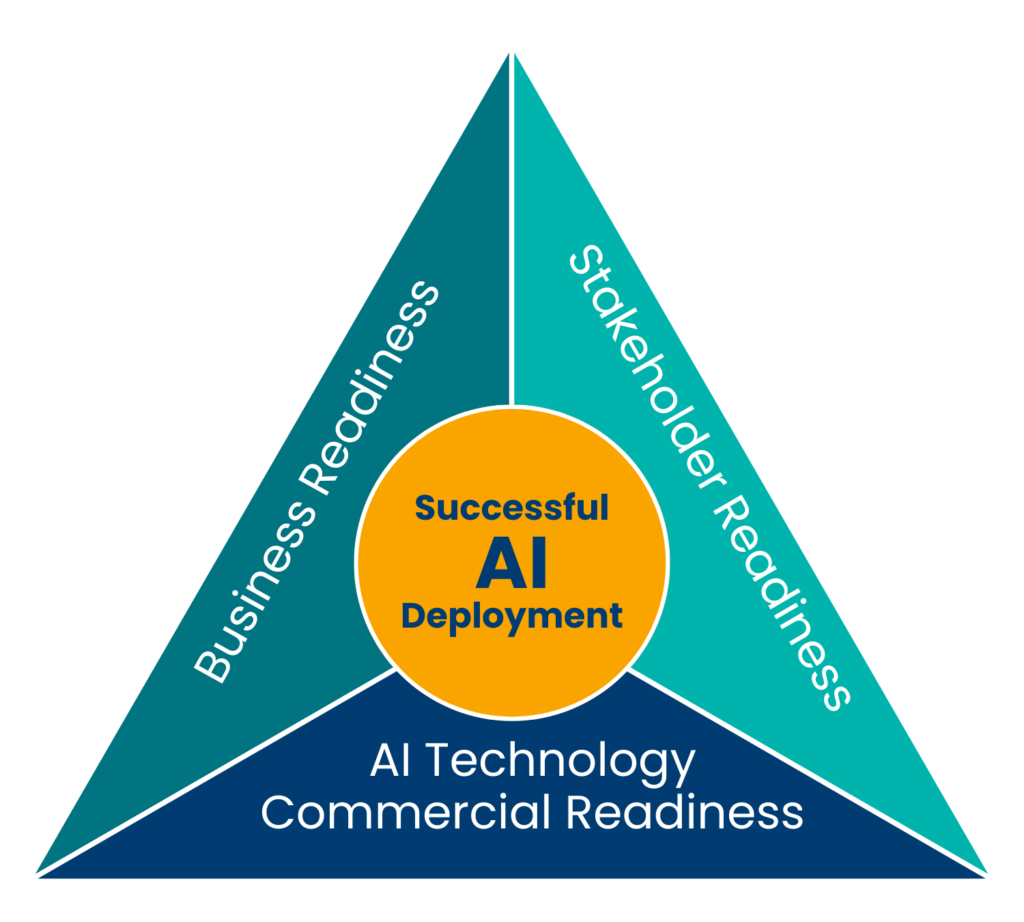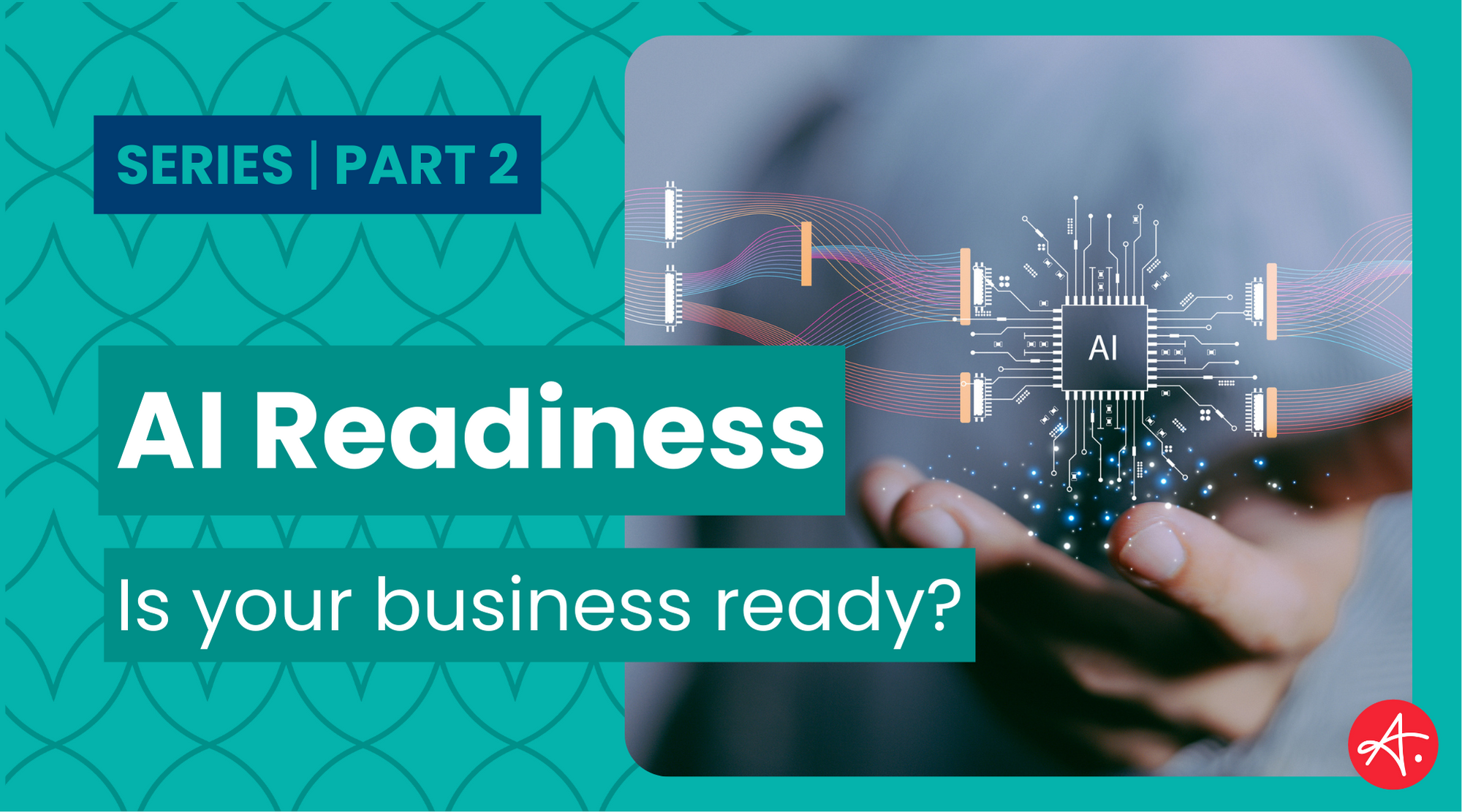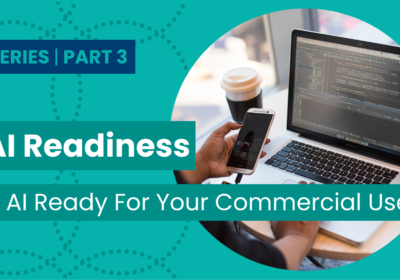
Assessing your business’ readiness to embrace AI
If you have been following this series, you may recall from the introductory article that there are two critical rules to understand as you consider AI applications in your business:
- AI technology is NOT a business strategy nor is it a technology strategy. It’s a tool.
- Commercial AI technology readiness is different from your business’ readiness to deploy AI.
Let’s talk about the initial gates you’ll need to move through for a successful AI deployment. There are three major challenges relating to readying your business for a successful AI tool adoption.
Challenge # 1: Information Inequality
Your first challenge is to cut through the noise to understand the current state of AI tools. AI is getting massive market visibility, thanks to major spending by tech giants (like Google and Microsoft). AI is certainly the hot story of the day, but that doesn’t mean that everyone is on the same page.
This is a challenge I call “information inequality.” Technology vendors have thousands of people who are knowledgeable on technology in general and especially their products, and they are investing hundreds of millions of dollars selling and promoting AI tools.
What you may know about AI is a small fraction of the knowledge that they have. They sell every day, and you purchase innovative technology only once in a while. They are bombarding business executives with claims like “you are already late to the party if you haven’t started adopting AI.”
I’d like to challenge that claim. Have you read about any AI failures? There are many, and while they often do not get the visibility they deserve, if you search for “AI fails,” you’ll find plenty of cautionary tales, such as these documented by CIO, Tech.co, and Forbes.
Learning happens from understanding both what has worked and what has not. That’s why many large corporations take a “fast follower” position regarding innovative technology. They closely watch early adopter competitors go first, then avoid their mistakes and replicate the things which worked well. This approach is excellent at risk management and maximizes investment returns.
Challenge #2: Business Plan
This may surprise you. Perhaps you were thinking that you only needed a focus on AI technology. But your responsibility as a business executive is to identify and prioritize those areas of your business where you think process-driven operational improvements are needed. Then you can take on the question of whether or not an AI solution will help drive those benefits. This is a “business first” approach which will challenge the promotion of tech vendors who focus on technology first.
Here’s an example of a business first approach: AI use in call centers is a common application of AI technology. Improving the working knowledge of your support staff and even reducing the number of your support staff are both desirable goals. But are they your top needs? Reengineering business processes often creates immediate benefit without significant investment. Call center and case management technologies can make your staff more productive with more proven technologies than AI. You might be able to achieve your near-term goals without AI.
You may also want to ask your customers what areas of your business they would like to see you improve. For the past three or four years every time I have conducted a brand audit or satisfaction survey for one of my clients I have asked the question about the importance of automated chat. In every case, clients preferred online, live interaction with an agent before the automated chat/AI approach.
Your Business Plan Table of Contents should cover these areas:
- Business Imperatives: Things that MUST get done to support customers, partners, suppliers, employees
- Industry and Competitive Analysis: Are you behind, catching up, or ahead?
- AI Education and Awareness: What does your exec team need to know to make informed decisions?
- Operations Design, Process Reengineering, and Build-out: What processes will AI support?
- Pilot Projects and Project Portfolio: Where will you pilot AI as a way to get hands-on experience?
- Financial Investments, Benefits, Milestones, Metrics: What are your expectations?
Every business understands their key opportunity areas. With that explicit knowledge, you can start to develop a technology plan for AI in your business.
Challenge #3: Technology Plan
Now that you have established your business priorities for AI, you can start defining a technology plan that will help you select, deploy, and support AI technologies.
Your Technology Plan Table of Contents should cover these areas:
- Technology Architecture and AI Integration: How will AI fit in, integrate, and “play” with your current technologies?
- Technology Scan and Partner Selection: Which AI suppliers and products are preferred, and why?
- Project Portfolio and Outcomes: What is being learned through AI pilots in the organization?
- AI App Design and Build-out: What guidelines and principles will you use to ensure a successful build?
- AI Solutions Deployment: Who, and how, will you support your AI tools?
Please note how the Technology Plan content parallels the Business Plan content. This approach helps ensure that your strategies and your operational deployment align.
As you develop your Technology Plan, your knowledge of AI will increase, and you will start closing the information inequality gap.
Practical next steps you can take to improve your readiness
- Review your business strategy and business plan. Does it reflect the current state of your business and the opportunities you want to pursue? If your plan is stale, you should update these items first before you go any farther.
- Assign someone to inventory all of the AI applications which may have made their way into your business. Even if you haven’t consciously licensed them, they may have come in as add-ons to other applications, like document processors such as Microsoft Word, browsers, and apps like Zoom.
- Take a complete inventory of all your IT projects and determine whether you have the capacity, people, and finances to start an AI project at the current time. Your existing initiatives may need prioritized focus first.
- Find a server location accessible to your staff to start capturing relevant business information and content which you may need in the future to fuel AI initiatives.
- Ask your sales and customer support teams whether customers have asked about your plans for AI, or if you are at risk of losing business to competitors who are adding value through AI solutions. Survey internal teams to understand where employees have identified opportunities for AI innovation.
- Assign a business leader and a technology leader to co-lead your initiatives—at least to get started.
AI will inevitably have an impact on your business. Now is the time to proactively take stock of your organizational readiness. Hopefully the next steps I’ve suggested above provide a place to start!
Dimensions of AI Readiness

This article is the second in a series where I share practical experience learned over 25 years as a Marketing and Technology executive. You can revisit the first article in the series here. Each subsequent article will focus on another dimension of readiness.
I hope you’ll follow along as we dive deeper on this topic. Meanwhile, if you’d like to explore opportunities to leverage AI in your marketing programs, we are here to help.







